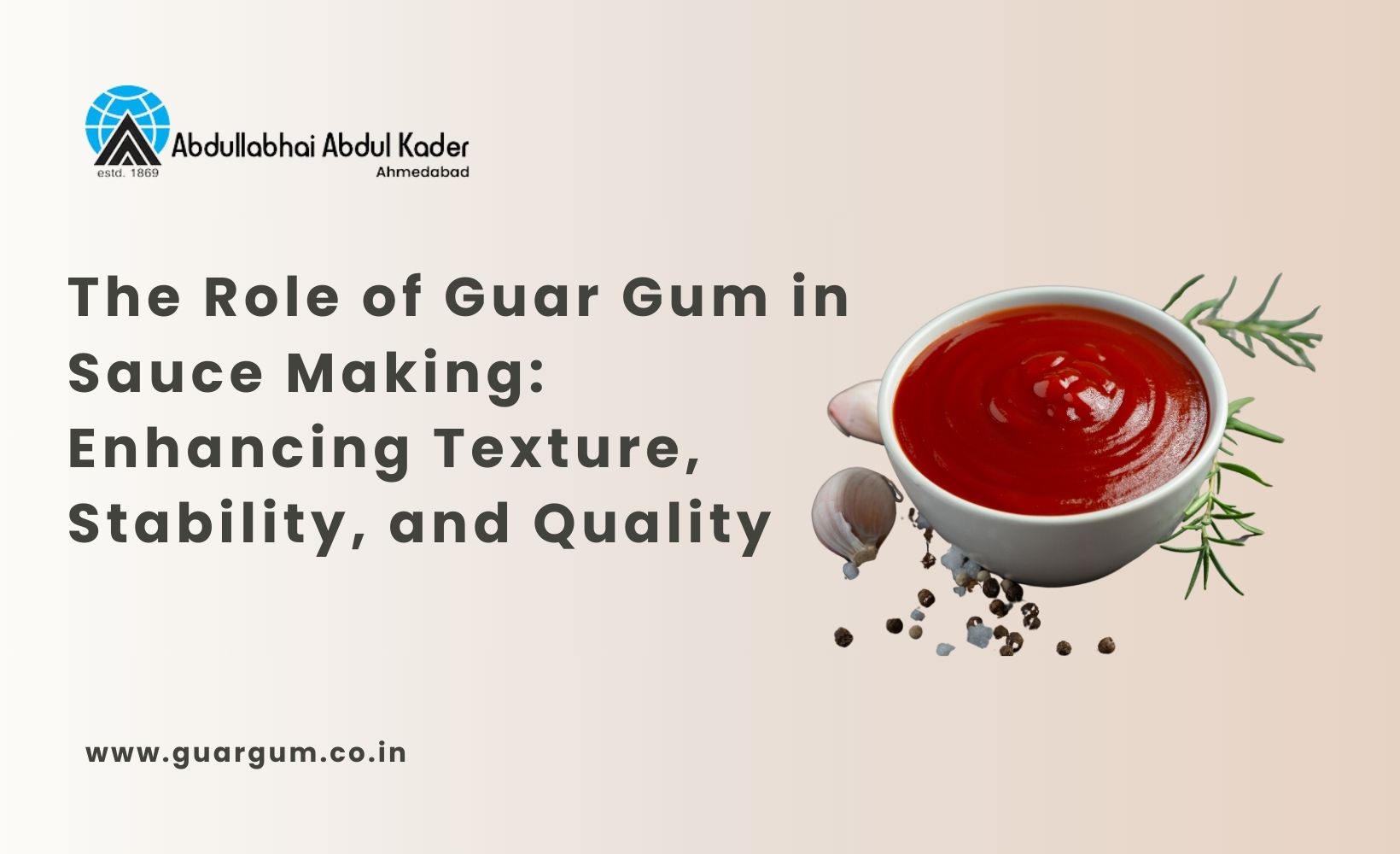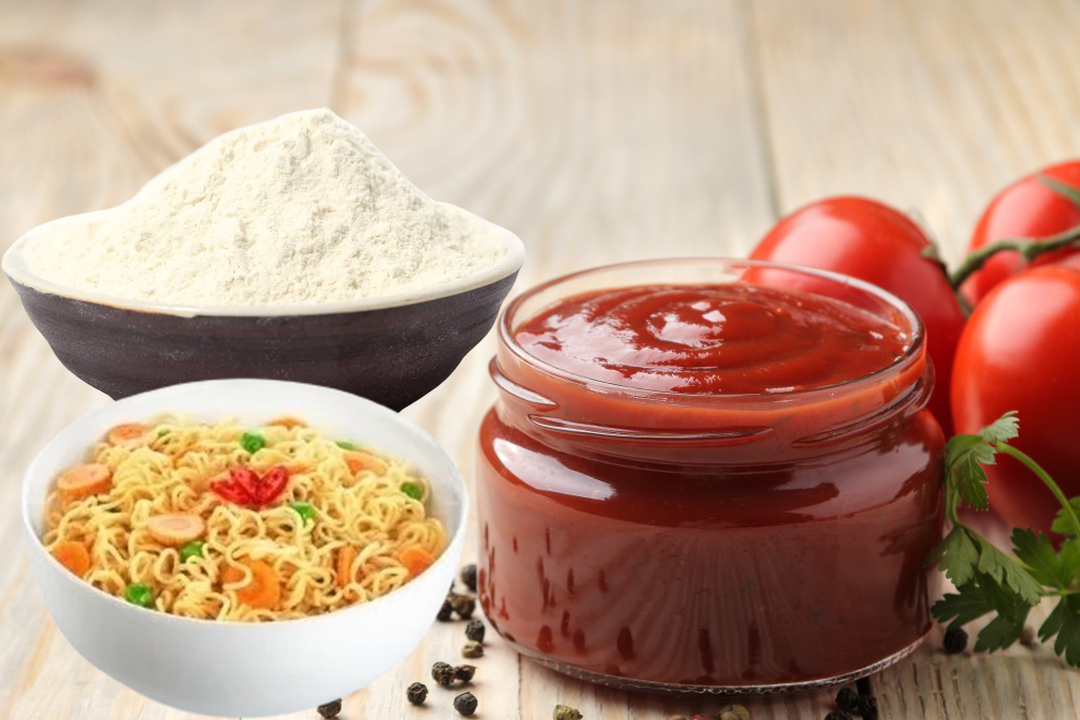
Guar gum, a natural polysaccharide extracted from the seeds of the guar plant (Cyamopsis tetragonoloba), has become an essential ingredient in the food industry. Known for its exceptional thickening, stabilizing, and emulsifying properties, guar gum plays a pivotal role in the production of sauces. Whether it’s a savory tomato sauce, a creamy white sauce, or a tangy barbecue sauce, guar gum helps achieve the desired consistency and enhances the overall quality of the product.
This article delves into the various applications of guar gum in sauce making, its functional properties, and the benefits it offers to manufacturers and consumers alike.
What is Guar Gum?
Guar gum is a water-soluble fiber obtained from the endosperm of guar beans. It is a galactomannan, composed of mannose and galactose sugars, which form a high-molecular-weight polymer. Guar gum is prized for its ability to form viscous solutions even at low concentrations, making it an economical and efficient thickening agent. It is widely used in the food industry to improve the texture, stability, and shelf life of various products, including sauces.
Why Guar Gum is used in Sauce Making
The unique properties of guar gum make it an indispensable ingredient in sauce formulations. Here are some of the key reasons why guar gum is used in sauce making:
- Thickening Agent: Guar gum significantly increases the viscosity of sauces, providing a smooth and uniform texture. Its thickening ability is unmatched, requiring only a small amount to achieve the desired consistency.
- Stabilizer: Sauces often contain a combination of water, oil, and other ingredients that can separate over time. Guar gum acts as a stabilizer, preventing phase separation and ensuring a consistent product.
- Emulsifier: Guar gum helps emulsify ingredients, creating a homogeneous mixture. This is particularly important in creamy sauces, where oil and water need to remain evenly distributed.
- Improved Mouthfeel: By adding viscosity and body to sauces, guar gum enhances the sensory experience, providing a rich and velvety texture experience.
- Freeze-Thaw Stability: Sauces that undergo freezing and thawing can experience changes in texture and consistency. Guar gum improves freeze-thaw stability, maintaining the quality of the sauce.
- Cost-Effectiveness: Due to its high efficiency at low concentrations, guar gum is a cost-effective solution for manufacturers looking to enhance the quality of their sauces without significantly increasing production costs.
Functional Properties of Guar Gum in Sauce Making
Guar gum’s functionality in sauce making is attributed to its unique physical and chemical properties:
- Hydration: Guar gum readily hydrates in water, forming a viscous solution. This makes it easy to incorporate into sauce formulations.
- pH Stability: Guar gum maintains its thickening and stabilizing properties across a wide pH range, making it suitable for acidic sauces such as tomato-based and barbecue sauces.
- Temperature Tolerance: It retains its functionality at various temperatures, ensuring consistent performance during cooking, cooling, and storage.
- Synergy with Other Hydrocolloids: Guar gum works synergistically with other thickeners and stabilizers, such as xanthan gum, to enhance the texture and stability of sauces.
Types of Sauces That Benefit from Guar Gum

Guar gum can be used in a wide variety of sauces, each requiring specific properties to meet consumer expectations. Some examples include:
- Tomato-Based Sauces: Guar gum thickens and stabilizes tomato sauces, ensuring a consistent texture and preventing water separation during cooking and storage.
- Creamy Sauces: In white sauces and Alfredo sauces, guar gum improves emulsification, creating a smooth and creamy consistency.
- Barbecue Sauces: Barbecue sauces often contain a mix of water, vinegar, and oil. Guar gum stabilizes these ingredients, preventing separation and enhancing the sauce’s texture.
- Sweet Sauces: For dessert sauces and syrups, guar gum provides the right viscosity and prevents crystallization of sugar, ensuring a silky texture.
- Asian Sauces: In soy-based and chili sauces, guar gum helps achieve the desired consistency and ensures that spices and flavourings remain evenly distributed.
How Guar Gum is incorporated into Sauce Making
The process of incorporating guar gum into sauce formulations requires careful consideration of concentration, hydration, and mixing techniques. Here’s an overview of the process:
- Dry Mixing: Guar gum is often mixed with other dry ingredients to ensure even distribution before hydration. This prevents clumping and facilitates smooth incorporation into the sauce.
- Hydration: The mixture is added to water or the liquid phase of the sauce with continuous stirring. Guar gum hydrates quickly, forming a viscous solution.
- Cooking: During cooking, guar gum maintains its thickening and stabilizing properties, ensuring the sauce retains its desired texture.
- Final Adjustments: The sauce is adjusted for viscosity, flavor, and consistency before packaging. Guar gum ensures that the final product meets quality standards.
Advantages of Using Guar Gum in Sauces
Guar gum offers numerous benefits for both manufacturers and consumers:
- Consistency: It ensures that sauces have a uniform texture and appearance, meeting consumer expectations for quality.
- Extended Shelf Life: By preventing separation and maintaining stability, guar gum enhances the shelf life of sauces.
- Reduced Ingredient Costs: Its high thickening efficiency reduces the need for other costly ingredients, making it an economical choice.
- Health Benefits: As a source of soluble fiber, guar gum contributes to digestive health, adding a functional benefit to sauces.
- Clean Label Appeal: Guar gum is a natural and plant-based ingredient, aligning with the growing consumer demand for clean-label products.
Challenges and Considerations
While guar gum offers numerous advantages, there are some challenges to consider:
- Clumping:Improper mixing can lead to clumping, which affects the texture of the sauce. Proper hydration and mixing techniques are essential.
- Concentration Control: Using too much guar gum can result in an overly thick or sticky sauce. Accurate measurement is crucial to achieving the desired consistency.
- Processing Conditions: Guar gum’s functionality can be influenced by factors such as temperature, pH, and the presence of other ingredients. Careful formulation is required to ensure optimal performance.
Future Trends in Guar Gum Applications for Sauces
As the food industry evolves, the use of guar gum in sauces is expected to grow, driven by the following trends:
- Health and Wellness: With consumers prioritizing health, guar gum’s fiber content and natural origin make it an attractive ingredient for nutritious and clean-label sauces.
- Plant-Based Products: The rising popularity of plant-based diets is driving demand for vegan and vegetarian sauces, where guar gum serves as a versatile thickener and stabilizer.
- Innovation in Textures: Advances in guar gum processing will enable manufacturers to create innovative textures and functionalities in sauces.
- Sustainability: Guar gum’s eco-friendly production aligns with the food industry’s focus on sustainability, making it a preferred choice for environmentally conscious brands.
Conclusion
Guar gum has revolutionized sauce making with its exceptional thickening, stabilizing, and emulsifying properties. From enhancing the texture and consistency of tomato sauces to improving the texture experience of creamy and barbecue sauces, guar gum offers unparalleled benefits to manufacturers and consumers alike. Its cost-effectiveness, clean-label appeal, and versatility make it an indispensable ingredient in modern food formulations.
As consumer preferences continue to evolve toward healthier, plant-based, and sustainable products, guar gum’s role in the food industry is set to expand. By leveraging its unique properties, sauce manufacturers can create high-quality products that meet the demands of today’s discerning consumers, ensuring a bright future for guar gum in sauce making.




